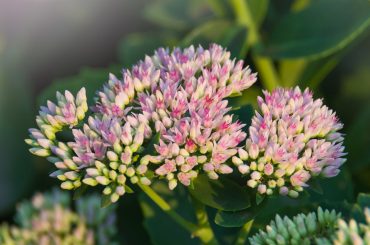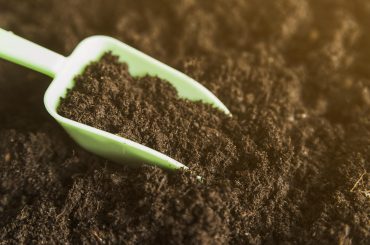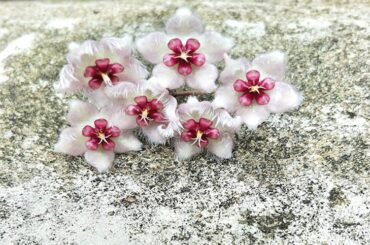Sansevieria Fernwood Mikado Air Plant, commonly known as snake plants, is one of the sturdiest plants out there. It can endure the brunt of nature really well and has laudable properties; it can be referred to as a natural air purifier and so it’s preferred to adorn darker rooms and bedrooms. These plants are shaped elegantly and have insurmountable tolerance levels. Ensconced in evergreen foliage, these sword-shaped plants are quite striking and statuesque. These plants can thrive in different conditions irrespective of the negligence they encounter while being propagated. In order to ensure its development and proper maintenance in the conservatory, we have held a detailed discussion on How To Grow Sansevieria Fernwood Mikado Air Plant With Care & Proper Maintenance.
What is Sansevieria Fernwood Mikado Air Plant
The terminology of Sansevieria Fernwood Mikado Air Plant can be simply construed as hybrid compact snake plants with indestructible nuances. These plants are easy to take care of and home dwellers find these plants convenient to grow in apartments due to their durable repertoire. These plants amass striking green foliage and can make your apartment a more idyllic spot. They are commonly referred to as snake plants and that alone hints at their well-wrought durable qualities.
Characteristics of Sansevieria Fernwood
The eclectic features and properties of Sansevieria Fernwood cannot be easily numbered. These plants are quite propitious when it comes to thriving on their own. They can live in darker secluded places with minimum resources. The only thing that can be fatal to these specimens is overwatering. Moreover, these plants can work like magic when it comes to purifying the squalor air of your apartment. Snake plants are packed with capabilities to leech out the toxins from the air; they can also be called natural air filters.
The Chart Below Portrays The Details of The Plant.
| Common Name: | mother-in-law’s tongue
|
| Type: | Herbaceous perennial
|
| Family: | Asparagaceae |
| Hardiness zones: | Zones 10 to 12
|
| Height: | 3.00 to 4.00 feet
|
| Spread: | 2.00 to 3.00 feet |
| Bloom Time: | Rarely flowers indoors |
| Bloom Description: | It’s an uncommon scenario as it rarely flowers indoors |
| Sun: | Partial shade |
| Water and pH levels: | Dry to Medium range; 5.5-7.5 |
| Maintenance: | Low |
| Foliage: | Colorful, Evergreen |
Advantage and Disadvantage of Sansevieria Fernwood Mikado
The merits of snake plants consist of the following points mainly:
- These plants can be used in various chemical industries to keep air pollution at bay. NASA has testified in favor of the air purifying qualities of Sansevieria Fernwood. They also play a role in making oxygen abundant as they release oxygen at night unlike other conventional plants
- The mother-in-law’s tongues a.k.a. snake plants suck in the toxins from the air and create a defense barrier against the allergens; allergic reactions of people living around these plants can be thwarted efficiently owing to such properties.
However, the snake plants can be detrimental to the health of some domestic animals as these leaves are bitter in taste and might cause toxic side effects if ingested.
Requisites to grow Sansevieria Fernwood Mikado
The rudimentary requisites to grow the snake plants are as follows:
- Well drainable, loose sandy soil
- Bright yet implicit rays of sunlight is an ideal requirement to grow snake plants
- Watering moderation and low moisture levels
- Warm temperatures.
Providing Appropriate Growing Environment
Prior to growing the snakeplants, attention must be given to garnishing a suitable environment that would facilitate the proper growth of the snake plants. Moreover, if the environment turns out to be inconvenient, it would be quite harrowing for the snake plants to grow with a constant pace. Therefore, let’s have a look at what points must be considered beforehand to structure an ideal environment.
Preparing The Soil With Adequate Organic Fertilizer
Although snake plants possess low maintenance traits and habits, it’s wrong to assume that they don’t need any nourishment. They do need proper soil to turn into their full-fledged versions; loose, sandy soil is recommended when it comes to nurturing these plants. Adding organic fertilizer to the soil is essential so that the plants can take in enough nutrients from the soil. It might be not necessary to add fertilizer to fresh soil but after a certain period of time, the soil runs out of its nutrients, and supplementing the soil with fertilizer is a nice touch to their overall growth.
The Necessary pH Condition
Although the pH condition of soil usually redefines the boon of growth in most plants, the snake plants are not much bothered about that aspect in particular. Sansevieria Fernwood can cope up with a pH range of 4.5-8.5; the ideal pH value ranges from 5.5-7.5. That being said, it’s better to keep track of the pH conditions for acquiring the optimum level of growth.
Pot Preparation
As the stage of pot preparation comes into play, it’s better to take note of the minute details so that the plants can grow at their own pace. The selection of the pot must be done meticulously; it must be done in such a way that the moisture levels of the plants can be easily taken care of. Plastic pots are a big no for these purposes and it’s safe to opt for terracotta pots. The terracotta pot is a highly plausible choice as these pots allow the soil to dry out easily. Another effective measure is to choose a pot with a drainage hole at the bottom; this also helps to keep the moisture level in check. A clay container is an ideal choice too; you can then choose a pot the same size or one diameter greater than the current container size and place the clay container in that pot. The clay container acts with full devotion to keep the moisture level at bay.
Required Sunlight and Temperature
Snake plants are great proponents of bright and implicit sunlight. They can also tolerate direct sunlight to some extent. However, they can also grow well in shady, gloomy corners (but at a slower pace). The pots must be placed in refulgent spots with a temperature above 50°F (10°C). The plants must be kept away from drafts during winters.
Humidity Tolerance and Preference
The snake plants prefer lower levels of humidity and higher levels of humidity can debilitate the snake plants severely; in fact, higher levels of moisture can destroy snake plants completely. You have to focus on synchronizing your water schedule and the relative humidity of the atmosphere. Do not settle for any ordinary water schedule as that can pose a great threat to the overall moisture level of the snake plants. Water your plants a bit frequently if the humid level of the atmosphere is low and refrain from overwatering when the humid level is comparatively high. Please take note of these factors very cautiously as overwatering is lethal to snake plants.
How To Propagate Sansevieria Fernwood Mikado Air Plant
Although Sansevieria Fernwood Mikado plants are appealing and easy to be grown, one needs to watch out for some criteria before delving further into the world of snake plants. A set of instructions must be followed to ensure the proper development of snake plants. Overstepping the line can batter the growth of the plants and it’s always better to be cautious instead of overconfident. A small set of instructions has been outlined below for the convenience of new plant parents. There are various ways of propagating a snake plant.
- Propagating Through Rooting (In Water): Select a container spacious enough to hold in the leaf of the snake plant. Choose a firm and healthy leaf and place it in the container. Fill the container with water in such a manner that the bottom quarter of the leaf tissue is submerged. Place the water in passive sunlight and change the water in every two days. Soon you will observe new roots sprouting from the leaf and you can then root the leaf outside and tend to it with the usual care and maintenances.
- Propagation Through Stem Cuttings: It’s quite similar to the above process; however there are some differences. The severed leaf should be allowed to roughen over the edge for the first couple of days and then the leaf should be inserted in a container having moist sand. Roots will sprout soon and then they can be planted on.
- Propagation Through Division: The snake plants usually stem from thick, underground structures called rhizomes. Rhizomes are packed with energy to facilitate the growth of stems and leaves. That being said, the plant’s base can be broken into different sections and so first you have to pull the plant from its pot. You can then use shears to sectionalize the base of the Snake plants. Normally, the base of these plants are cut in half and then three rhizomes along with one healthy leaf plant are planted in a new potting medium.
Sansevieria Fernwood Mikado Propagation (The Calibration Of Soil For Ideal Propagation)
Instead of rushing to shops for buying a good soil mix, one can easily prepare the perfect medium with a recipe:
- Use 2 parts of coarse sand, 1 part peat moss, 1 part potting mix, or garden soil. And there, you have a perfect soil mix.
- Also in the case of measuring the fertilizer, note the ratio of the nutrients or the N.P.K ratio. This ratio denotes the amount of nitrogen, phosphorous, and potassium present in the fertiliz
- In the case of organic fertilizers, the recommended dosage is 1 spoon per gallon of water.
The Role Of Water In The Propagation Of Sansevieria Fernwood Mikado Plants
- As mentioned before, a pot with a drainage hole is an ideal choice for the snake plants as maintaining the moisture levels is a prime factor for the well-being of these specimens.
- Rainwater and bottled spring water work well to boost up the overall hydration of snake plants; these types of water don’t contain much toxins or impurities and so play a vital role in taking care of the snake plants.
Water The Soil
Watering the soil is absolutely necessary but before doing so one must check the soil in the pot. Watering should be done with a certain gap between days and it’s advisable to water the soil when the top 2 to 3 inches of the soil appear to be dry and lackluster. The notion of watering can be construed as a necessary evil for the snake plants as the excess of it can kill them.
Pruning
It’s essential to keep in mind that the leaves of the Snake plant should not be pruned until it’s absolutely necessary to do so. Whilst the tips of the plant’s leaves turn brown, do not set out on pruning the leaves. One of the downsides of tending to the snake plants is that these plants can easily get subjected to scarring; thus, it’s tempting to prune the brown tips. However, it would do more harm than good. In case of dropping leaves, one can opt for pruning as those are usually on the verge of collapsing. Also, old or dead leaves can be pruned along with other parts of the plant but the golden rule to do so is to prune below the dead part, about 1cm or half an inch.
Blooming tips
Do remember that the best elements to facilitate the blooming of snake plants are sources of light like sunlight, electric light. There are some wrong innuendos like a plant needs a fertilizer if a plant’s blooming is impeded. Fertilizers do nothing except providing nutrition to the plant. Even if you opt for a bloom booster fertilizer, it’s not going to work wonders for your plant. It’s a mere booster, not a ‘bloom maker’. The booster can enhance the size and color of the bloom and that’s it. Whereas, sunlight/electric light paves the path of blooming as the plants derive their main strength from the process of photosynthesis.
Sansevieria Fernwood Mikado Care And Maintenance
The MITs or the snake plants possess many forgiving attributes and so they are quite easy to grow within the comforts of ones’ home. They have great survival aptitudes and can tolerate large levels of negligence. Taking care of snake plants can be anyone’s cup of tea as long as they keep an eye on the moisture levels; it can be a bit tricky for the tentative plant lovers out there as a lapse of focus can threaten the lives of the snake plants. Therefore, one must be well prepared before embarking on the journey of growing Sansevieria Fernwood Mikado.
.
Here are some points that need to be remembered well before delving deeper into the journey of growing snake plants.
- Right Fertilizer: The best fertilizer for growing snake plants consists of NPK ratio 10-10-10; here N, P, K denote Nitrogen, Phosphorous, and Potassium.
- Ideal Temperature: The ideal temperature for growing snake plants is 55° – 85° F.
- Perfect Soil: mix For the perfect soil mix, you can opt for 2/3 to 3/4 parts of organic potting soil, 1/3 to 3/4 parts of organic succulent and cactus mix, 1/3 parts of perlite, 1/3 parts of clay pebbles.
- Repotting: While repotting use a slightly bigger sized pot (than the current one) to accommodate the snake plants suitably.
- Adequate Watering: Water your snake plants after assessing their conditions; if the top 2/3 inches of the soil appear to be dry, water them accordingly to maintain the moisture level.
- Pest Control: Excess humid levels, overwatering, poor air circulation can be quite threatening to the snake plants as these conditions attract pests and bugs. Never ever mist your snake plants as these increase the propensity of attracting bugs; pests adore moist conditions and they infest the snake plants when the temperament turns moist. Snake plants are in favor of well ventilation and prefer to grow in aerated soil conditions. If they fail to acquire such living conditions, they can face bacterial and fungal infections. Prune the infected plants and also use some good pesticides to expunge the risks of further infestations.
Frequently asked questions (FAQs) On Sansevieria Fernwood Mikado Air Plant
Which species of Sansevieria Fernwood are mostly available in markets?
Answer: Most of the Sansevieria available on the market are of the trifasciata species; these are versatile and have rapid growth
What is the origin of Sansevieria Fernwood?
Answer: These are mainly originated from Africa, Madagascar, and southern Asia
What is the most unusual thing about Snake plants?
Answer: They release oxygen at night time.
Why don’t they need watering on a regular basis?
Answer: Their leaves have the mechanism to hold in water and so they don’t need water on a regular basis.
What are the signs of the diseases in snake plants?
Answer: They gradually start turning brown and also begin to wilt.
How fast do Sansevieria Fernwood Mikado grow ?
Answer: These plants tend to be quite lackadaisical while growing; they can take months, even years to reach their mature height. Additionally, it also depends on their caregivers.
Are sansevieria toxic to cats & dogs?
Answer: Yes, these plants are highly toxic to cats and dogs. Don’t keep these plants within the proximity of other living beings like cats, animals, and children.
Final Thoughts
Snake plants or Sansevieria Fernwood are exquisite yet unwavering plants which require minimal care to develop; however, some tactical points and features must be kept in mind while nurturing snake plants. If these points are not taken into consideration, the overall condition of the lovely snake plants will be battered. Facets like moisture levels, temperature, potting systems are integral parts of the development of the MITs, and overlooking any of these points can be a health hazard for the snake plants. All in all, snake plants are excellent choices for new plant lovers and one thing can be assured with pure confidence, you are going to fall in love with snake plants as soon as you cast a glance towards them. Happy Planting!





